Angular Momentum
Posted by Paula Nadelstern on May 14th 2018
Please enjoy this peek inside Fabricadabra—Simple Quilts, Complex Fabric: Discover the Hidden Potential in Your Stash by Paula Nadelstern.
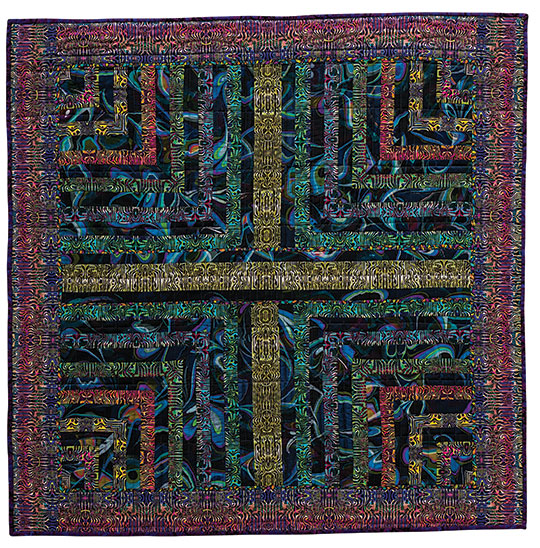
ANGULAR MOMENTUM, designed and pieced by Paula Nadelstern, quilted by Elizabeth Rosenberg, 36 ̋ × 361/2 ̋, 2015

The 1/4 ̋ strips of stained-glass fabric adjoining each long horizontal silk strip in the middle add a feisty twinkle, but their initial purpose was to function like a girdle, stabilizing the wonky silk. This fabric also appears on all four sides, just inside the wide border.
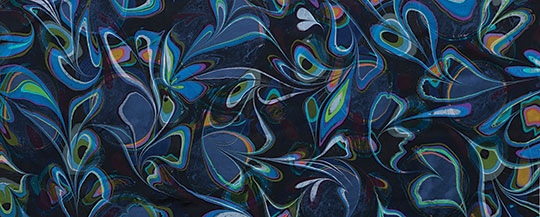
Hand-marbled silk by Cosette Russell of Austin, Texas
I saved this fabulously zany marbled silk by Cosette Russel of Austin, Texas, for years, visiting it often. Since this flowing textile acts slinky even when interfaced with a fusible stabilizer, it needed to be cut into simple shapes and bordered with stable on-grain cottons to act as coping strips for trueing up.
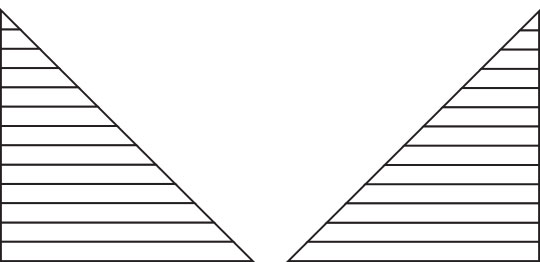
Left and right triangles
To make the quilt, I made a full-size diagram of one quadrant on graph paper. Each quadrant is made from two identical triangles, one left and one right, each composed of thirteen 1 ̋ strips. The exceptions are the middle horizontal and vertical strips, which are 2 ̋, and the 1/4 ̋ strips of stained-glass fabric adjoining each long horizontal silk strip in the middle and around all four of the quilt’s edges. The key to constructing this type of quilt is to strip on one band at a time and use full-size tracing-paper templates with seam allowances to attain the correct shape and size.
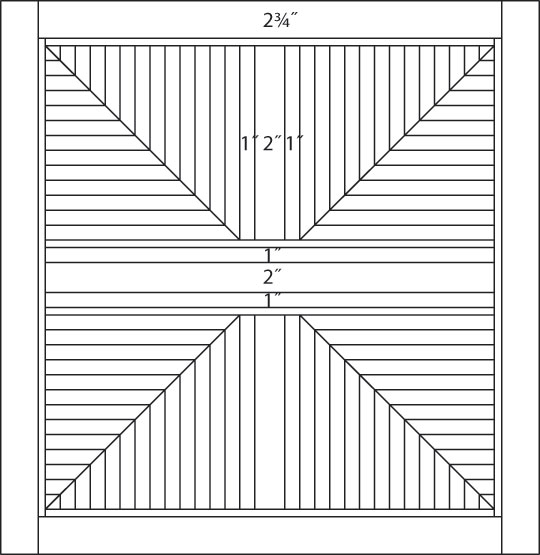
Quilt layout
I sliced the silk randomly, assuming it would reconnect to itself in serendipitously odd but interesting links. All the added-on silk strips were cut wider and longer than needed to compensate for their unavoidably wonky qualities (including shrinkage when pressed) and then trimmed to the correct size using the tracing-paper templates. I fussy cut the alternating bands using five colorways of a pattern called Tangles to create a graded effect that moves the eye from the lighter corners in toward the darker centers.
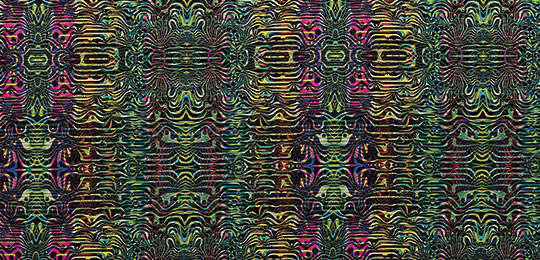
Tangles fabric
Each of these pieced bands was cut with a template, four times to the left and then four more times with the template flipped over to the right to create its mirror image.
In case you were wondering, angular momentum is a term used in both physics and horology (the study of measuring time). Momentum is the force that allows something to continue moving or to grow stronger or faster as time passes; angular refers to moving in a circle—as in orbiting or rotating. In horology, the term refers to watches using a revolving disk system to represent the hours. I only know this because my husband is a watch geek, and as soon as I write this I will probably forget it.







